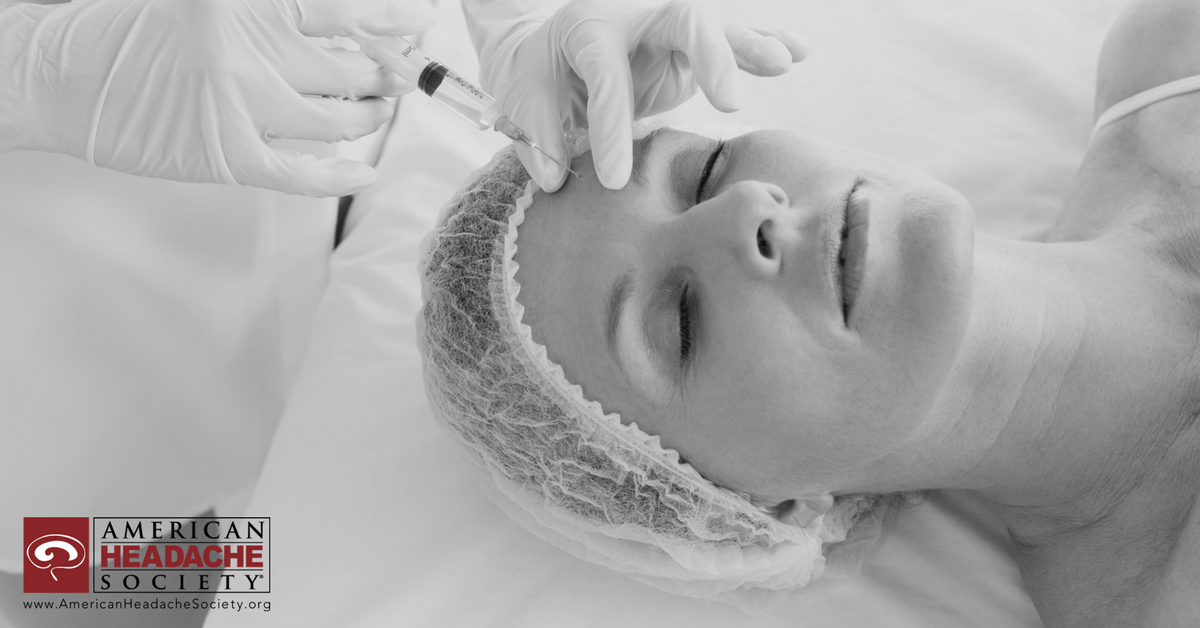
From the Journal: Predicting OnabotulinumtoxinA Treatment Outcomes
Research published in Headache finds new biomarkers that may help predict the efficacy of the OnabotA treatment
OnabotulinumtoxinA injection therapy has been shown to significantly reduce the number of headache days in patients with chronic migraine. The treatment’s results have made an impact on many people with chronic migraine, although there is a percentage of people who receive the injections and see no results at all. Previous studies have attempted to predict the efficacy of the treatment based on clinical characteristics, neuroimaging features and molecular biomarkers, but results thus far have been inconsistent.
An observational study published in Headache titled CGRP and PTX3 as Predictors of Efficacy of Onabotulinumtoxin Type A in Chronic Migraine: An Observational Study¹ by Clara Dominguez, MD, and colleagues compared the levels of selected biomarkers in three groups. Group one was healthy controls, group two was patients with chronic migraine who had successful outcomes with OnabotA treatments and group three was patients with chronic migraine who had no response to OnabotA treatments. The biomarkers observed related to inflammation, endothelial dysfunction, blood-brain barrier disruption, brain damage and trigeminovascular activation. These biomarkers were selected for observation due to their involvement in the pathophysiology of migraine.
The participants with chronic migraine were selected from patients that received care at the University of Santiago de Compostela Neurology Department between April 2013 and June 2015. These patients received OnabotA treatment twice over two consecutive periods of 12 weeks. The treatment efficacy was evaluated using patient diaries completed in the three months following the second dose of OnabotA. Patients were asked to record the number of moderate to severe acute headache episodes that lasted longer than 4 hours. Patients were then classified into two groups: nonresponders (those who had less than 50% reduction in headache frequency and responders (those who had more than a 50% reduction in headache frequency).
After collecting and examining the patient blood samples, researchers found that patients with higher levels of the pentraxin 3 (PTX3) and the calcitonin gene-related peptide (CGRP) were significantly more likely to respond to the OnabotA treatment. Previous studies have found that there are larger amounts of CGRP, a biomarker of trigeminovascular dysfunction, in the blood of OnabotA responders. What makes this study truly unique is that it is the first to find a similar relationship between OnabotA and PTX3, which is a biomarker of endothelial dysfunction. Endothelial dysfunction and its role in the pathophysiology of migraine has been studied for years, but the results have been controversial. This study reinforces that role, and may indicate a new biomarker for the selection of treatment in patients with chronic migraine.
The American Headache Society is committed to keeping its members up to date on the most innovative and meaningful advancements in the realm of headache medicine. One of many initiatives to support that mission is our publication of Headache: The Journal of Head and Face Pain, published ten times per year, which highlights the latest findings in the realm of headache medicine research. Our “From the Journal” series offers a preview of some of the groundbreaking work detailed in Headache. Enjoy access to the full catalog of content plus a print subscription included with an American Headache Society Membership. Click here to become a member today.


